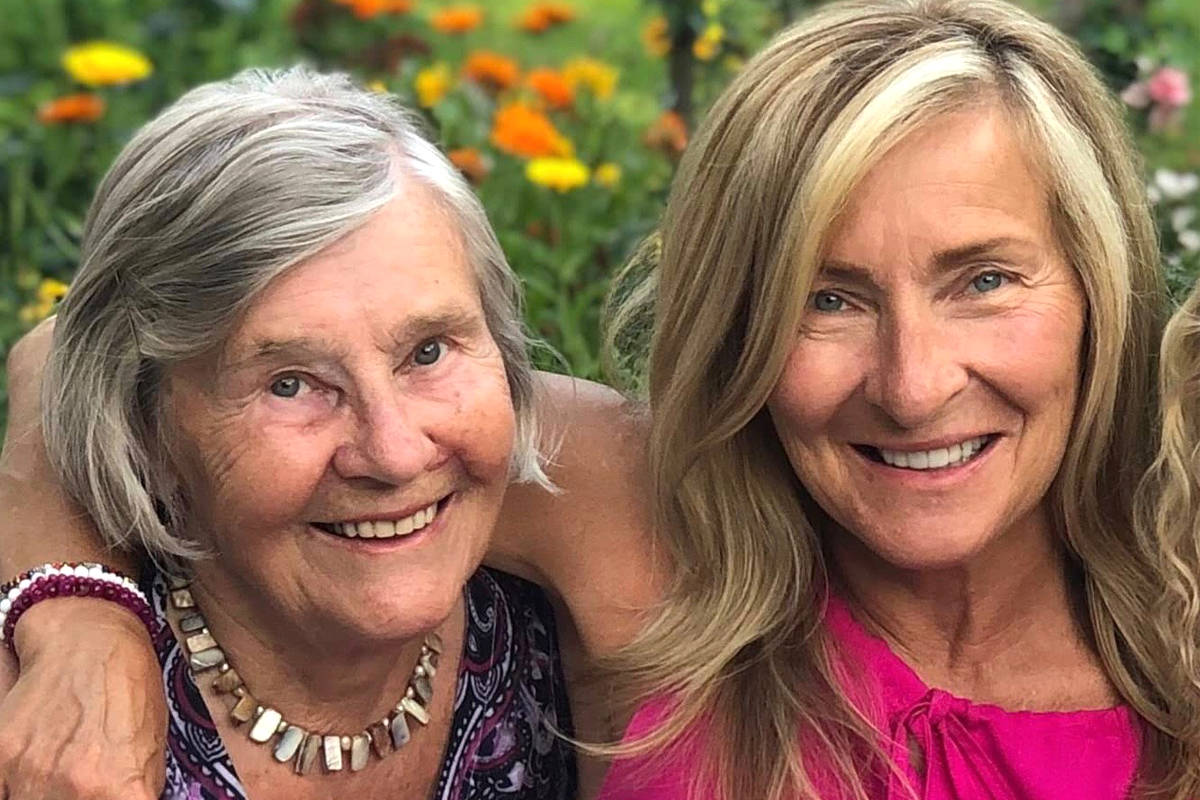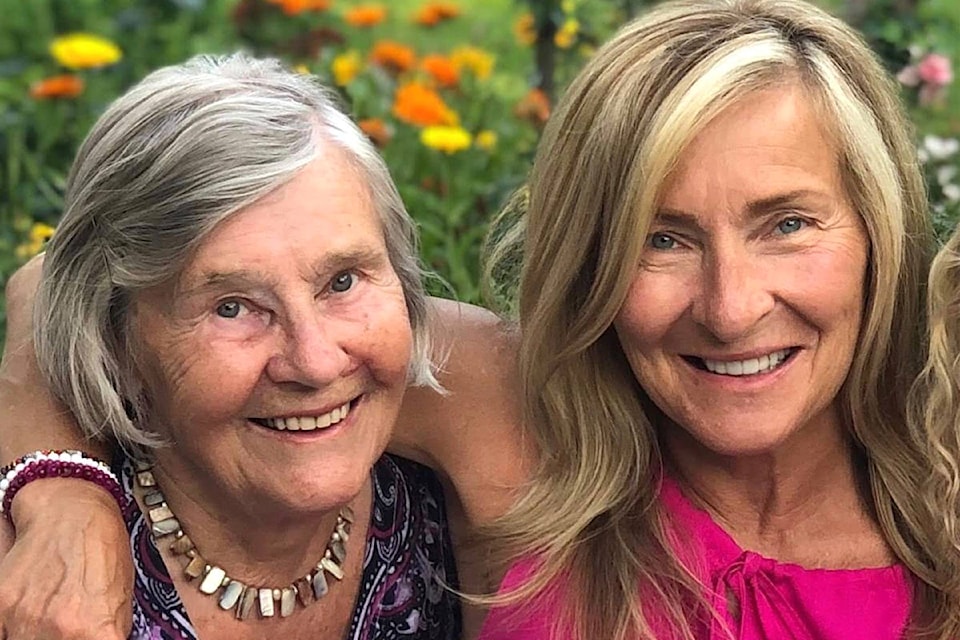For more than a month, Stasia Huby lived in the eye of a COVID-19 storm.
The virus was first detected at West KelownaтАЩs Heritage Retirement Residence on Dec. 22. By the time the outbreak was declared over by Interior Health on Feb. 2, four people were dead while 41 residents and five staff members had been infected.
Huby was one of the lucky residents to emerge from her suite healthy. She had been alone, a little scared, but also stoic.
тАЬIтАЩm a very strong type,тАЭ she said. тАЬBut if it happens, it happens. ThereтАЩs not much you could do about it.тАЭ
During the Heritage outbreak, HubyтАЩs daughter Joanne Waddell did her best to stay connected from her home in Ontario. Huby has no family in the city except for a son-in-law, and Waddell describes her mother as a person who enjoys being social.
Waddell last visited Huby for two weeks in August, but during the outbreak they were limited to video chats. Waddell praised HeritageтАЩs staff for making sure Huby had what she needed and said the situation went as well as it could for her family.
But the two months Huby spent locked in her suite is an irreplaceable loss of time for her 87-year-old.
тАЬWhen theyтАЩre into their 80s, even 70s, the clock is ticking,тАЭ said Waddell. тАЬAnd for this to happen to them at this stage in their lives, itтАЩs just like what a waste to be quarantined and stuck in a room, and not be able to go out and do things because (youтАЩre) at the last stage of your life.тАЭ

The majority of COVID-19 deaths in B.C. have occurred in care facilities such as Heritage Retirement Residence.
There have been 222 outbreaks in long-term care, assisted living and independent living homes across B.C. since the pandemic first was declared March 5, 2020, at North VancouverтАЩs Lynn Valley Care Centre, according to the B.C. Centre for Disease Control. Including acute care, that total rises to 273 outbreaks as of Jan. 30.
Of the 3,103 residents who have tested positive, 872 have died as of Jan. 30. There have been no deaths among the 2,088 staff who have tested positive.
But despite health minister Adrian DixтАЩs announcement on Jan. 29 that 26,584 residents had been vaccinated, with the first dose of vaccines having been made available to every long-term care home in B.C., there were still 23 active outbreaks as of Feb. 2.
Dr. Albert de Villiers, chief medical officer for Interior Health, said itтАЩs no secret how the virus is getting into long-term care facilities.
ThereтАЩs a clear correlation between a rise of cases in a community and outbreaks at its long-term care homes.
тАЬWe know with these types of viruses тАж the only way for it [to come in] is through people. ItтАЩs not going to blow in through the windows.тАЭ
That means family visiting loved ones, and the staff who residents rely on to care for them.
De Villiers said staff are doing their best to adhere to health protocols, but mistakes happen тАУ forgetting to wash hands for example тАУ and the pandemic nearing its first anniversary has led to fatigue among caregivers.
De Villiers said Interior Health has tried to account for this by being mindful of staff mental health and taking people off shift when needed. Staff are screened with health questions, but regular testing isnтАЩt practical.
The polymerase chain reaction (PCR) test is the most accurate available, but a result currently takes around 20 hours to complete. Rapid tests (the pan bio antigen test and a separate molecular test) are less accurate, but only take 15 to 20 minutes each.
But De Villiers said itтАЩs still a drain on resources as staff have to take time off to take a sample and get it analyzed.
B.C.тАЩs Seniors Advocate Isobel Mackenzie believes more regular testing of staff should have been introduced in October when the province announced a second wave of infections had begun.
Rapid testing, or perhaps a twice-weekly PCR test, wouldnтАЩt necessarily show if a staff member was patient zero of an outbreak, but Mackenzie said it would prevent further infections among staff and residents.
тАЬThe minute your test result comes back positive, weтАЩre able to pull you off shift,тАЭ she said.

Mackenzie is also critical of personal protective equipment (PPE) distribution in B.C.
Before the pandemic, she said privately managed care homes were responsible for their own PPE supply of items such as gloves and masks. But when initial demand for PPE skyrocketed, it exposed smaller care homes with less purchasing power. A centralized, permanent provincial supply chain would solve that issue, she maintains.
Mackenzie said itтАЩs important to remember long-term care facilities are not the same as acute care. The former are homes, where residents and staff form relationships.
So how can residents safely interact with their loved ones in a place that ideally is not much different than a private home? ItтАЩs a question to which De Villiers believes public health care must provide a new answer.
тАЬWe know if you leave people in long-term care and thereтАЩs no family connection and no social connection, thatтАЩs not good for their health either,тАЭ he said.
De Villiers and Mackenzie also want to see shifts in how seniorsтАЩ health care, for residents and staff, are considered after the pandemic. Mackenzie says staff health needs to become a bigger priority with a workplace culture that encourages sick leave.
De Villiers expects public health to double down on messaging that discourages people from being social while sick.
Huby will see that future. She had her first vaccine shot on Jan. 16, and celebrated her birthday on Feb. 10. Heritage Retirement Residence will remain her home.
тАЬI couldnтАЩt choose any better.тАЭ
READ MORE:
тАв
тАв
тАв
тАв
| tyler.harper@nelsonstar.com
Like us on and follow us on .
Want to support local journalism during the pandemic? Make a donation .




